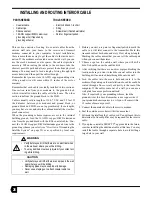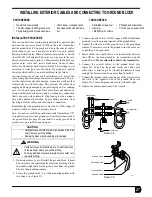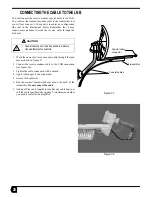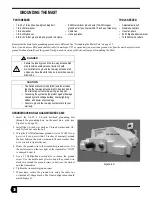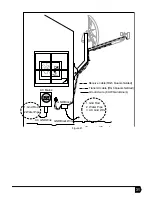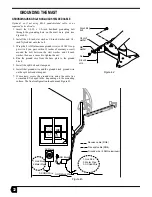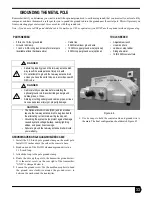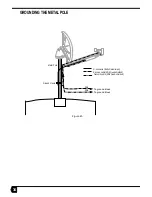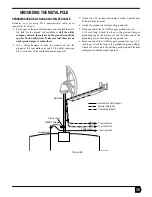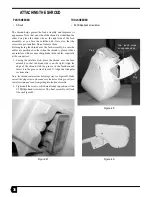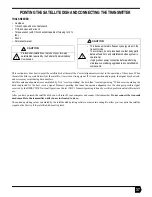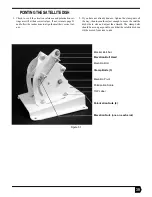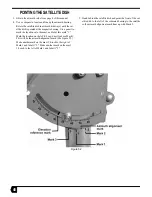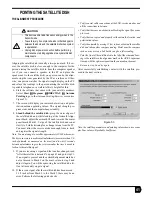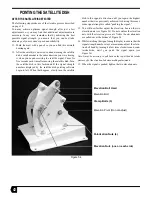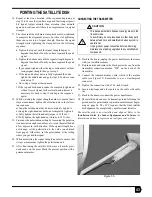
30
GROUNDING THE MAST
Remember the metal pole grounding procedure is different. See “Grounding the Metal Pole” on page 33.
Note: if you do not use RG6 quad shielded cable (CommScope 5781 or equivalent) you must run a ground wire from the mast base plate to the
ground block and install it and the ground block ground wire onto a split bolt and clamp nut.Grounding the Mast
GROUNDING USING RG-6 QUAD-SHIELDED CABLE
1. Insert the 1/4-20 x 1/2-inch hex-head grounding bolt
through the grounding hole on the mast base plate (see
Figure 42 on page 32).
2. Install the 1/4-inch star washer, 1/4-inch washer, and 1/4-
inch Nylock nut onto the bolt.
3. Wrap the 8 AWG aluminum ground wire (or 14 AWG cop-
per wire if you pass within 12 inches of masonry) around
the bolt between the start washer and 1/4-inch washer, then
use a wrench to tighten the nut.
4. Route the ground wire to the transmitter ground screw. It is
the metal screw on the rear right of the transmitter; “GND”
is stamped below it.
5. Use a #2 Phillips-head screwdriver to loosen the ground
screw. Use the needle nose pliers to bend the ground wire
clockwise around the ground screw, in between the washer
and the transmitter.
6. Tighten the transmitter ground screw.
7. If necessary, secure the ground wire using the cable ties
or insulated U-shaped tacks. The final configuration should
match Figure 41.
PARTS NEEDED
TOOLS NEEDED
• 1/4-20 x 1/2-inch hex-head grounding bolt
• 1/4-inch star washer
• 1/4-inch washer
• 1/4-inch Nylock nut
• 5/8-inch x 8-foot ground rod and ground rod clamp
• 8 AWG aluminum ground wire (14 AWG copper
ground wire if you come within 12 inches of masonry)
• Cable ties
• U-shaped tacks
• Adjustable wrench
• Needle nose pliers
• Lineman pliers
• #2 Phillips-head screwdriver
• 14/8 AWG wire cutters
DANGER
• Failure to properly ground the two-way antenna dish
may result in severe personal injury or death.
• Do not attempt to ground the two-way antenna dish
unless you have the skills to do so in accordance with
NEC code.
CAUTION
• The National Electric Code (NEC) and local codes
require the two-way antenna dish to be grounded to
the alternating current main earth ground point.
• Grounding the system helps protect against damage
caused by static voltage buildup, nearby lightning
strikes, and power line crossings.
• Failure to ground the two-way system will void your
warranty.
Figure 40
Ground screw











